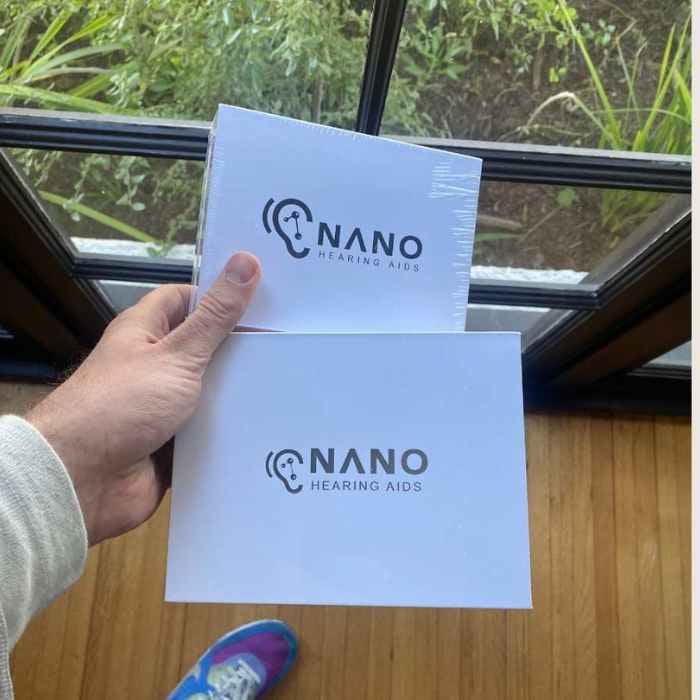Few topics in the world of hearing health bring out as many strong feelings as the brand Nano Hearing Aids. The company sells thousands of hearing aids annually at prices ranging from $250 to $600 a pair.
Nano launched in 2017 with the stated goal of selling more affordable hearing aids directly to consumers online. In theory, their business model has become more acceptable in the US now that the FDA cleared OTC hearing aids for sale in 2022.
Changing regulations has yet to help Nano's reputation. They consistently get critical reviews for their marketing practices and sales tactics. In January, Nano even got sued by the state of Vermont for various marketing tactics, including falsely claiming to be made in the USA.
All that being said, I had never tried Nano hearing aids myself. So last month, I purchased a pair of in-the-ear and behind-the-ear devices to test the controversial Nano experience for myself.
In this review, I'll share what I learned.
Prefer to watch this review?
Click play below for my full Nano unboxing and review.
My Nano Hearing Aid Purchase
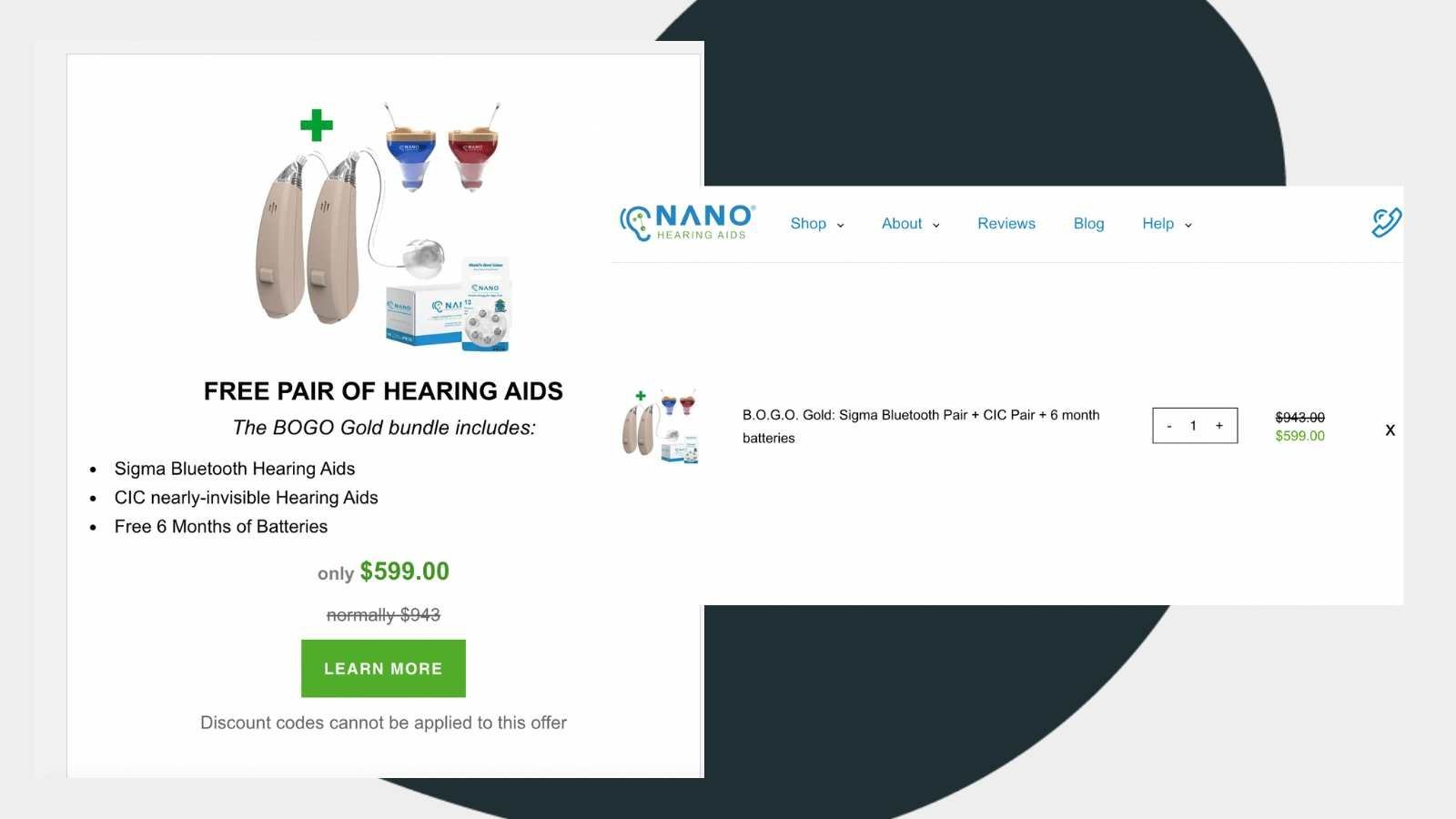
I purchased my Nano hearing aids online. The company is nearly always running sales, and I chose the BOGO Gold Bundle, which includes a pair of in-the-ear and behind-the-ear devices.
The purchase process was simple enough, and once it was complete, I was shown a video that explained Nano's mission and their 60-day challenge (more on that later).
The hearing aids arrived about a week later, and it was time for my unboxing.
Unboxing My New Nano Hearing Aids
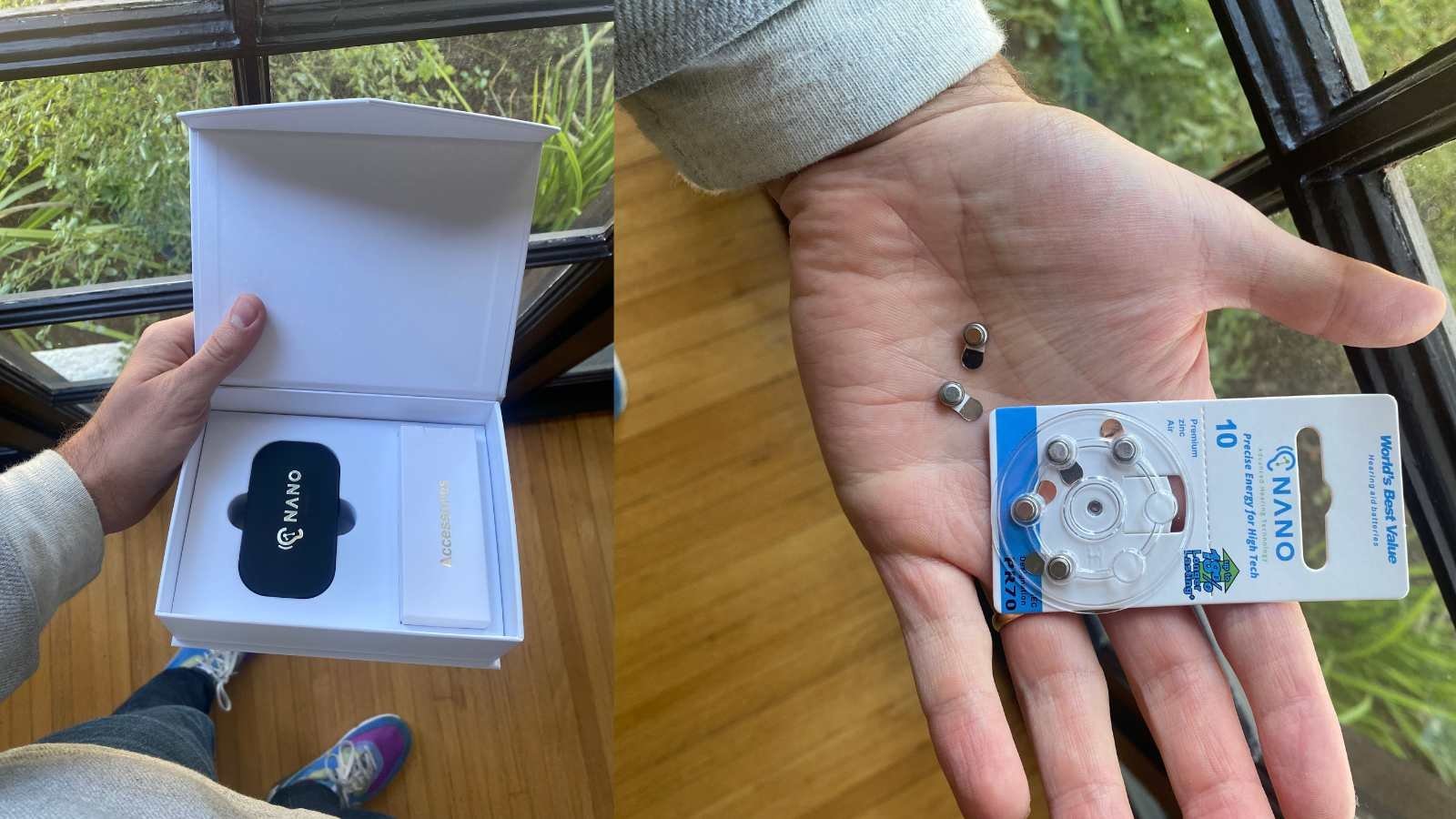
My two new sets of Nano hearing aids came in their own boxes, each with a branded carry case. The packaging and case feel less premium than other direct-to-consumer products like Bose or Sony, but they are not bad for the price.
Each box includes various ear tip sizes, and Nano also sent a generous supply of batteries size 10 (used for the in-the-ear style) and size 13 (used for the behind-the-ear style) batteries.
I started with a review of my new in-the-ear devices.
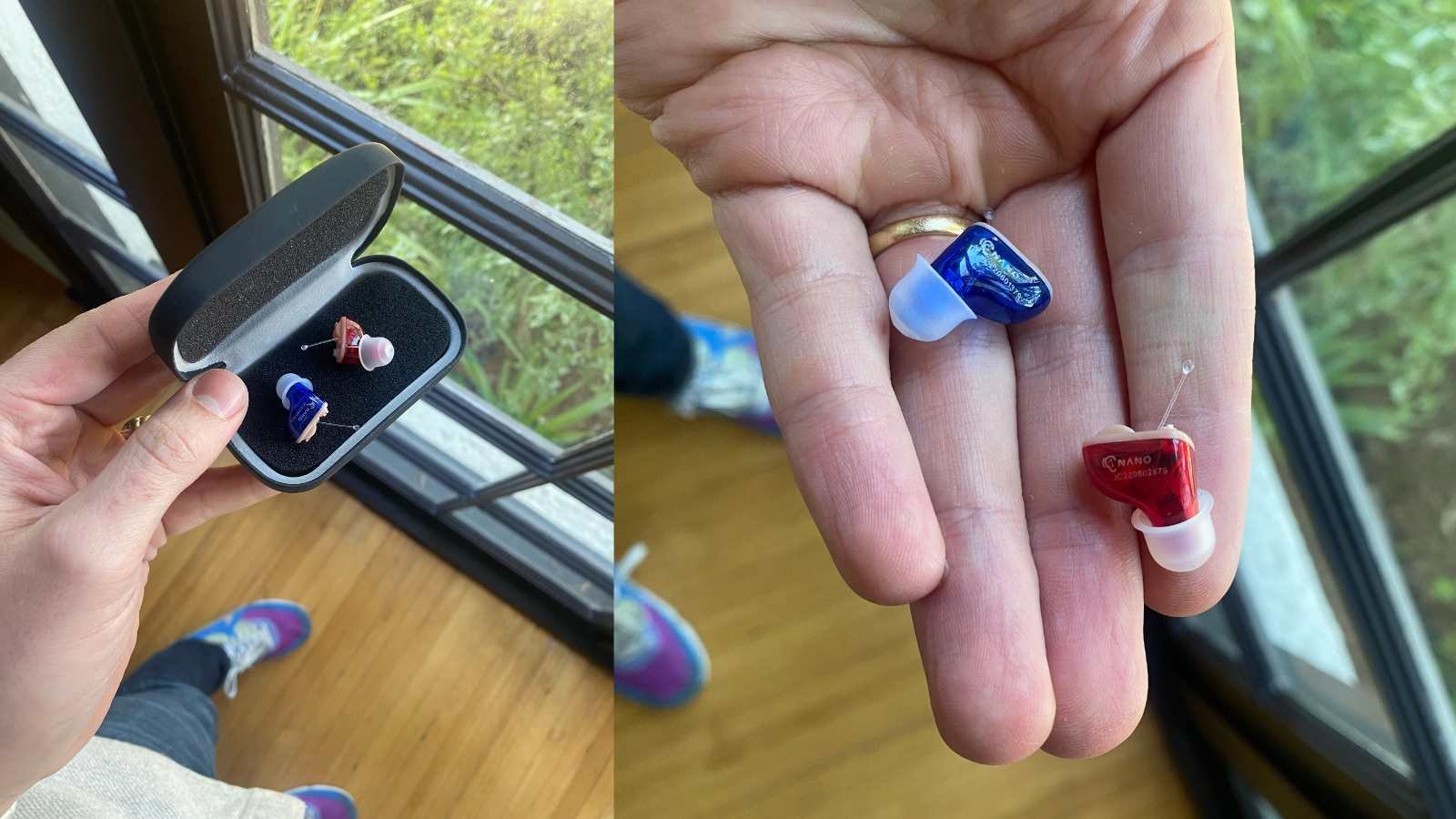
The in-the-ear style hearing aids are definitely not invisible in my ears, but they are reasonably comfortable and stay out of the way of masks or glasses. In the photo below you’ll see my Sony CRE-C10 devices for comparison.
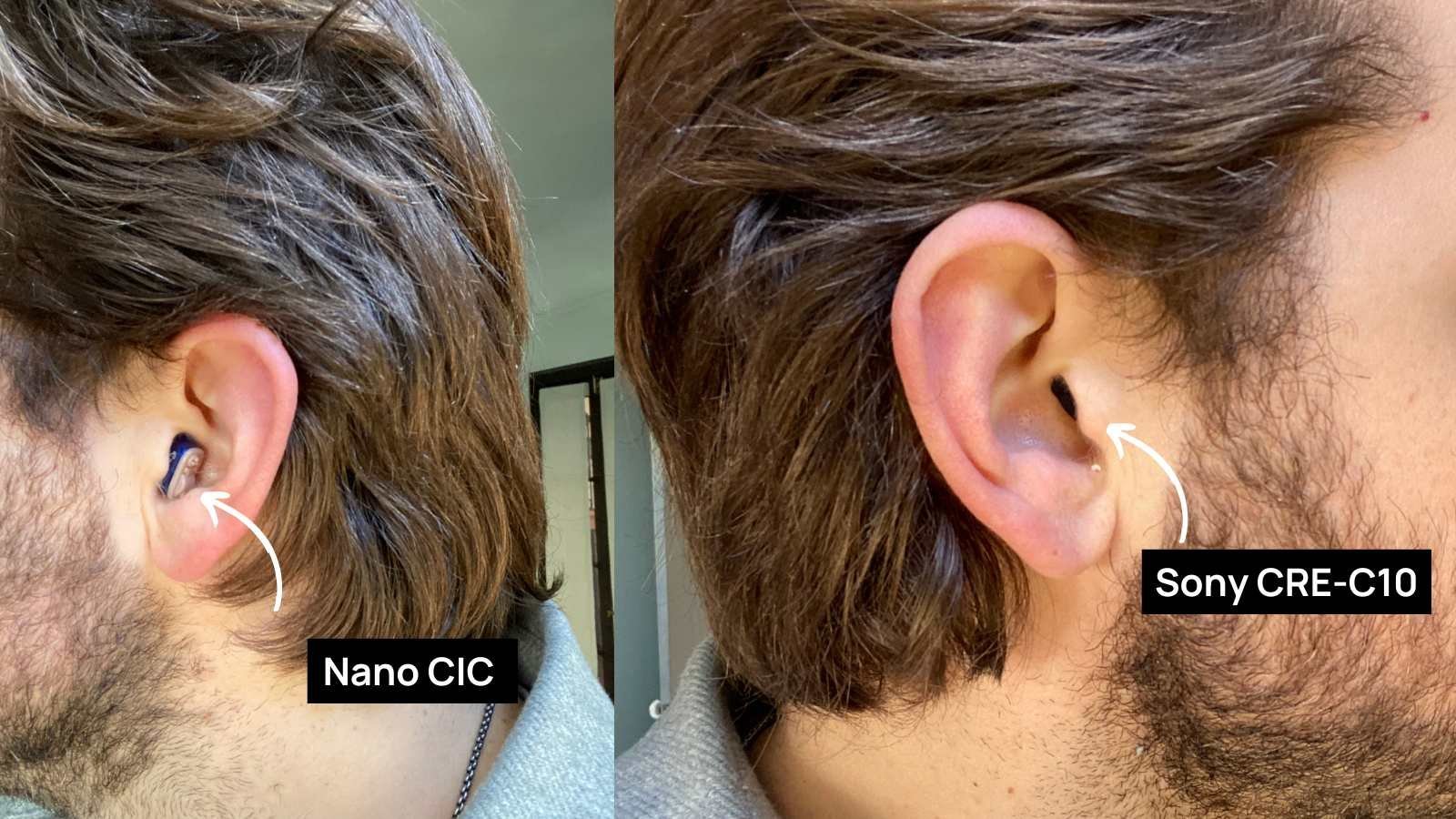
Nano offers some rechargeable in-the-ear devices, but the version I got with my BOGO deal uses a disposable size 10 battery. Not a big drawback for me.
In-The-Ear Style Sound Quality and Adjustments
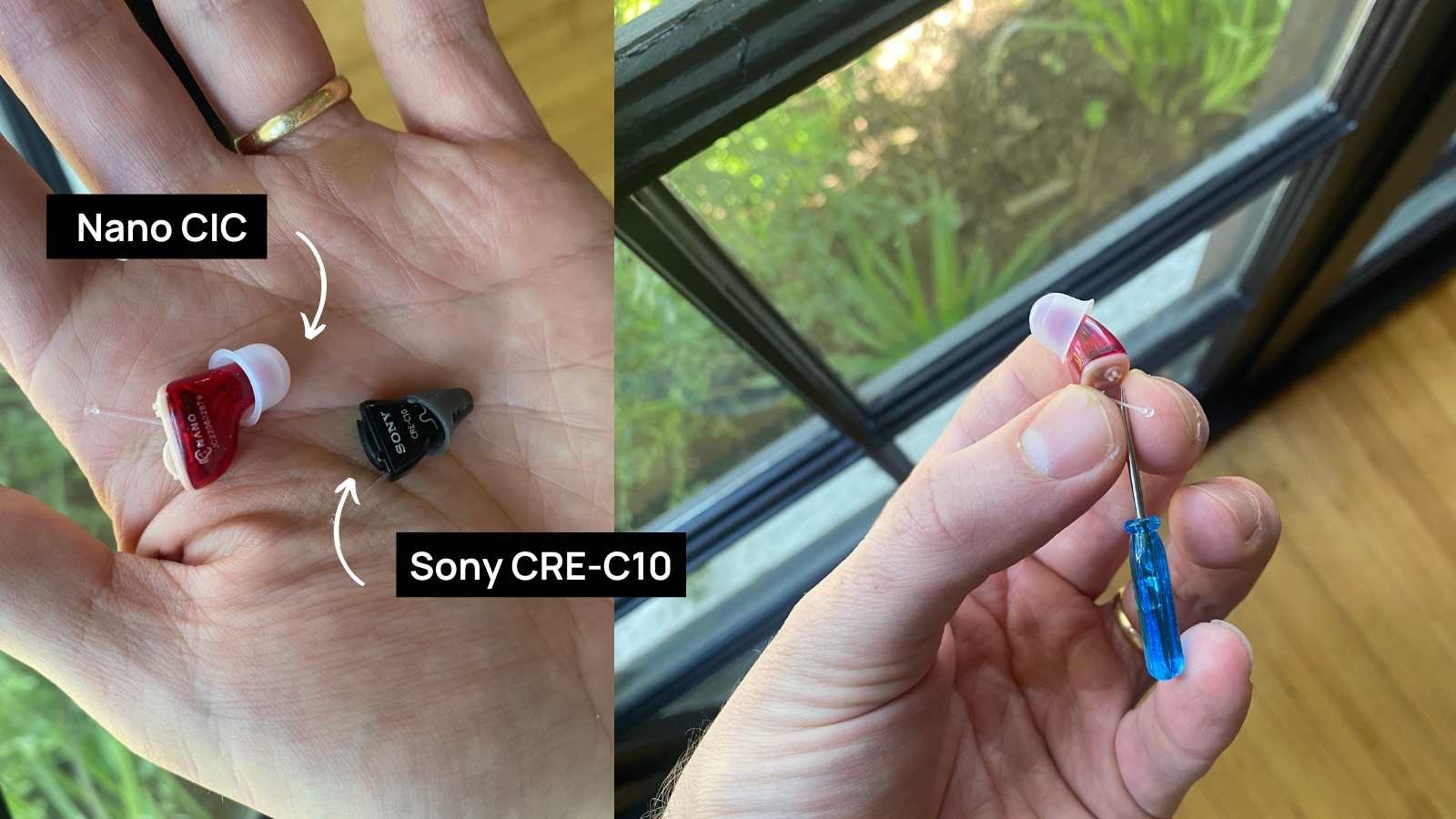
Adjustment
Nano in-the-ear hearing aids are straightforward, with only the option to adjust the volume (no programs or customization). To change the volume, you'll need to use a screw-driver-like tool and turn a knob on each device.
Overall clarity
In my experience, these hearing aids are boomy, don't manage background noise well, and don't offer customization to my hearing loss. I couldn't imagine wearing these in high-stakes situations like a meeting or a doctor's office.
Occlusion
I have pretty good hearing in low frequencies, which means that I don't typically like the feeling of my ears being plugged up.
The Nano in-the-ear product plugged my ears significantly, which I don't love. Some other in-the-ear brands, like Eargo and Sony CRE-C10, have more open venting and less boomy sound quality when I speak. You can test this out by putting a finger in your ear and talking.
Feedback
This one really got me. The hearing aids squeal EVERY time I put them in my ears. Once they were in my ears, they stopped squealing, but putting them in was uncomfortable.
I figured I was doing something wrong but later saw in the user manual the suggestion to "put the hearing aids in as quickly as possible" to avoid feedback.
Takeaway
Net net, I would not recommend these devices, and I'm not sure they add a lot of value to the BOGO.
Next, I unboxed my behind-the-ear devices.
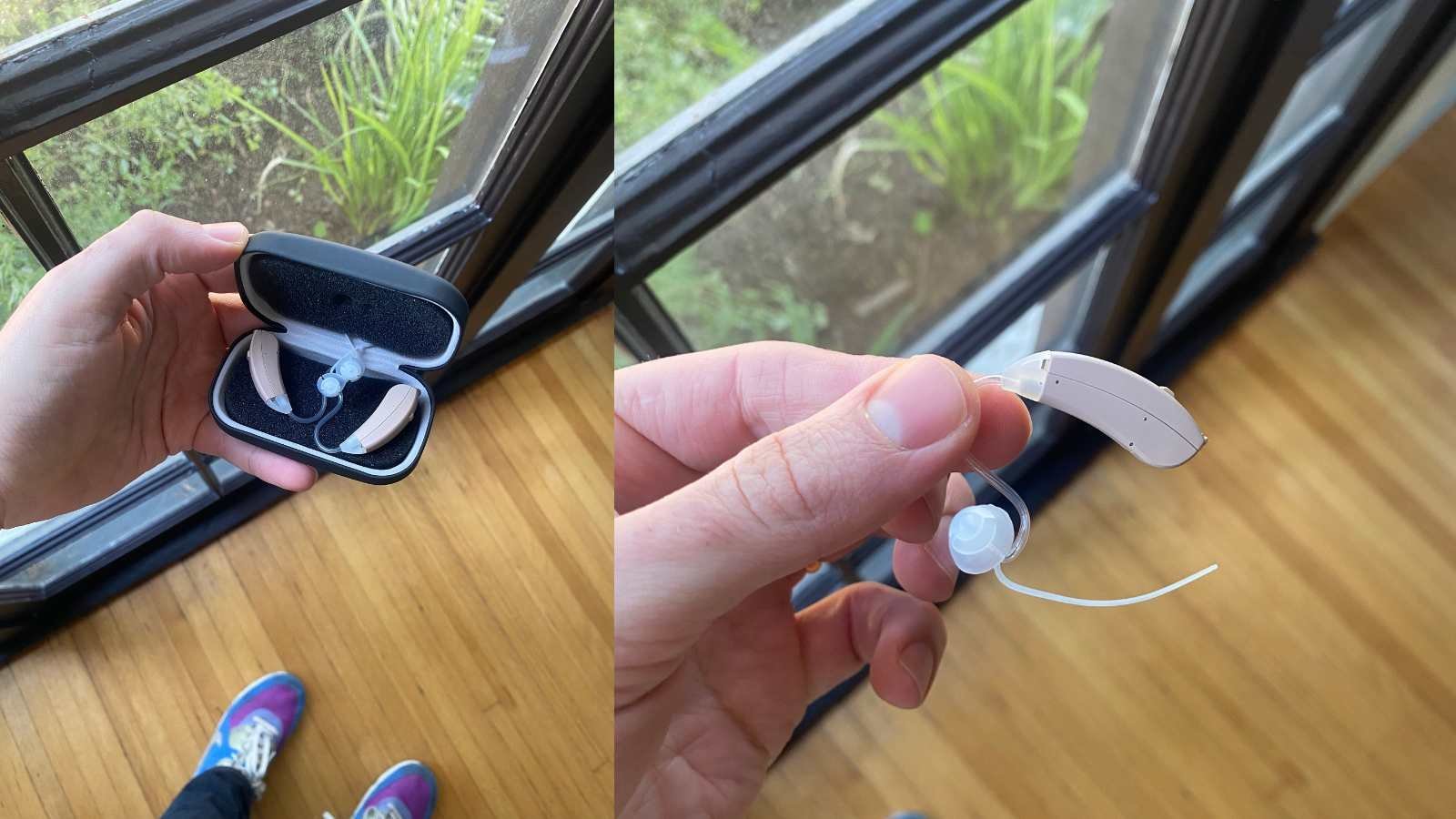
I typically wear behind-the-ear style devices for their comfortable fit and open sound quality. Instantly I found Nano's behind-the-ear style hearing aids more comfortable and more useful.
Nano's hearing aids are larger than other budget options like Bose, and they use a thin tube to send sound from the body of the hearing aid into the ear. Most leading hearing aids use a wire and send that sound to a speaker inside the ear.
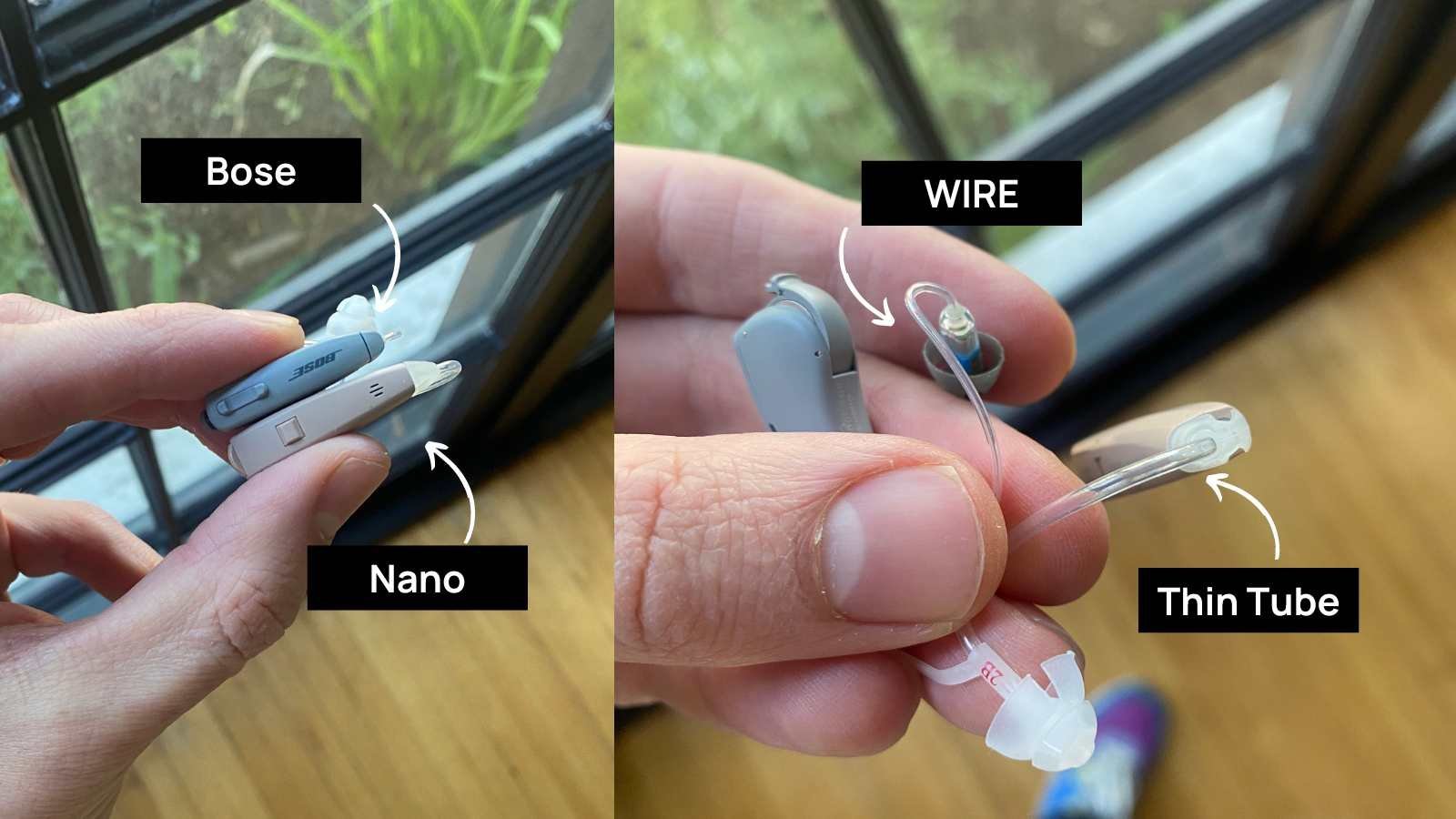
Nano offers some behind-the-ear style hearing aids that are rechargeable (here), but the devices I chose use disposable size 13 batteries. Again, not a big drawback for me.
Behind-The-Ear Style Sound Quality and Adjustments
Adjustment
Unlike Nano's in-the-ear devices, these products do offer some sound adjustment options using a smartphone app.
The hearing aids quickly and easily connected to the app, and I followed the prompts, which led me through a 10-minute hearing test.
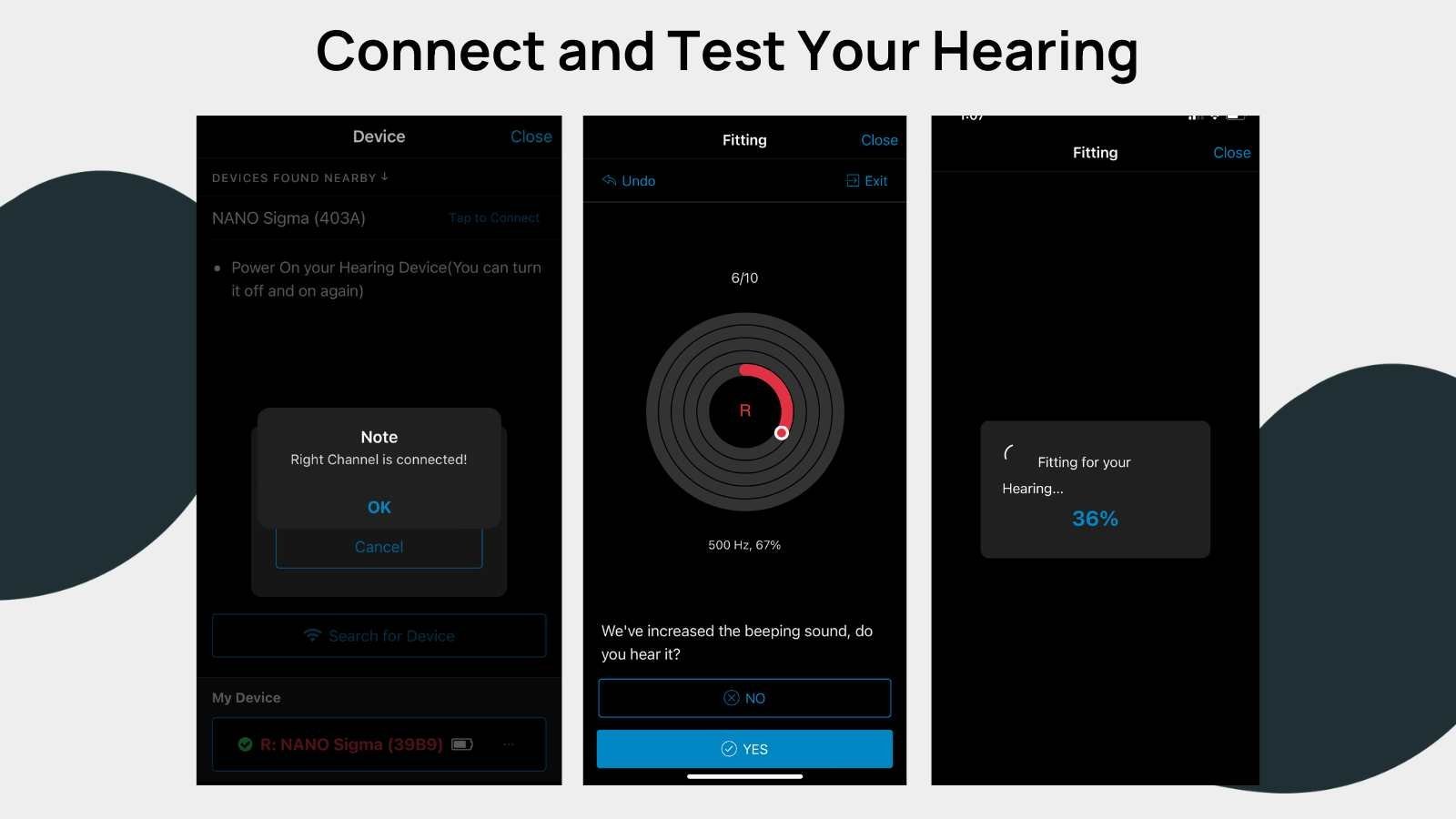
Throughout the test, my hearing aids played a series of beeps at varying frequencies, and I tapped the screen each time the beep was audible.
At the end of the test, I instructed the app to customize my hearing aids, and they took me to the "band" screen where I could review my amplification at each frequency.
My initial results were reasonably accurate for my right ear and pretty far off for my left ear. I've taken enough hearing tests to know the shape of my hearing loss, so I made some manual adjustments.
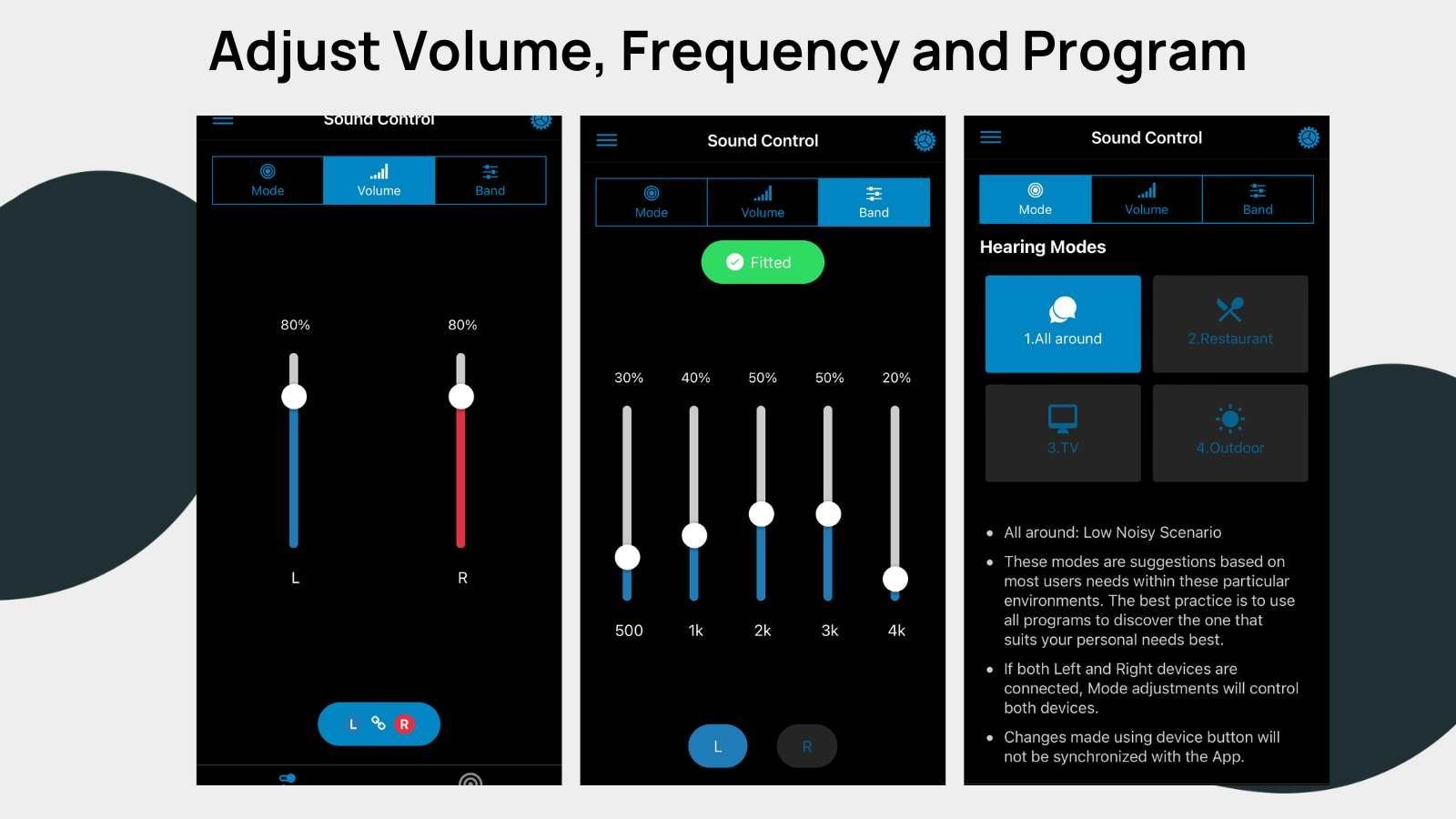
I do like the fact that the band adjustments are so readily available in the app. Knowledgeable users can easily customize their sound without re-taking the test.
The "mode" section of the app has a series of pre-set configurations for various settings. I played with the modes and found all-around to be the most useful.
Overall clarity
After I got my hearing aids set up, I wore them in a few different noise environments to test their ability to manage background noise. Overall, they did ok! They certainly boosted clarity for TV watching, and I didn't have issues with the sound of my own voice.
Takeaway
These are budget hearing aids. They definitely don't compete on form factor or sophistication with more premium OTC devices like Bose or prescription devices like ReSound OMNIA. The app is reasonably easy to use, but the hearing test wasn't accurate for me.
That said, these hearing aids could help someone hear better in simple listening situations, like in front of the TV or quiet conversations. The question is whether they are worth $597.
My experience with Nano customer service.
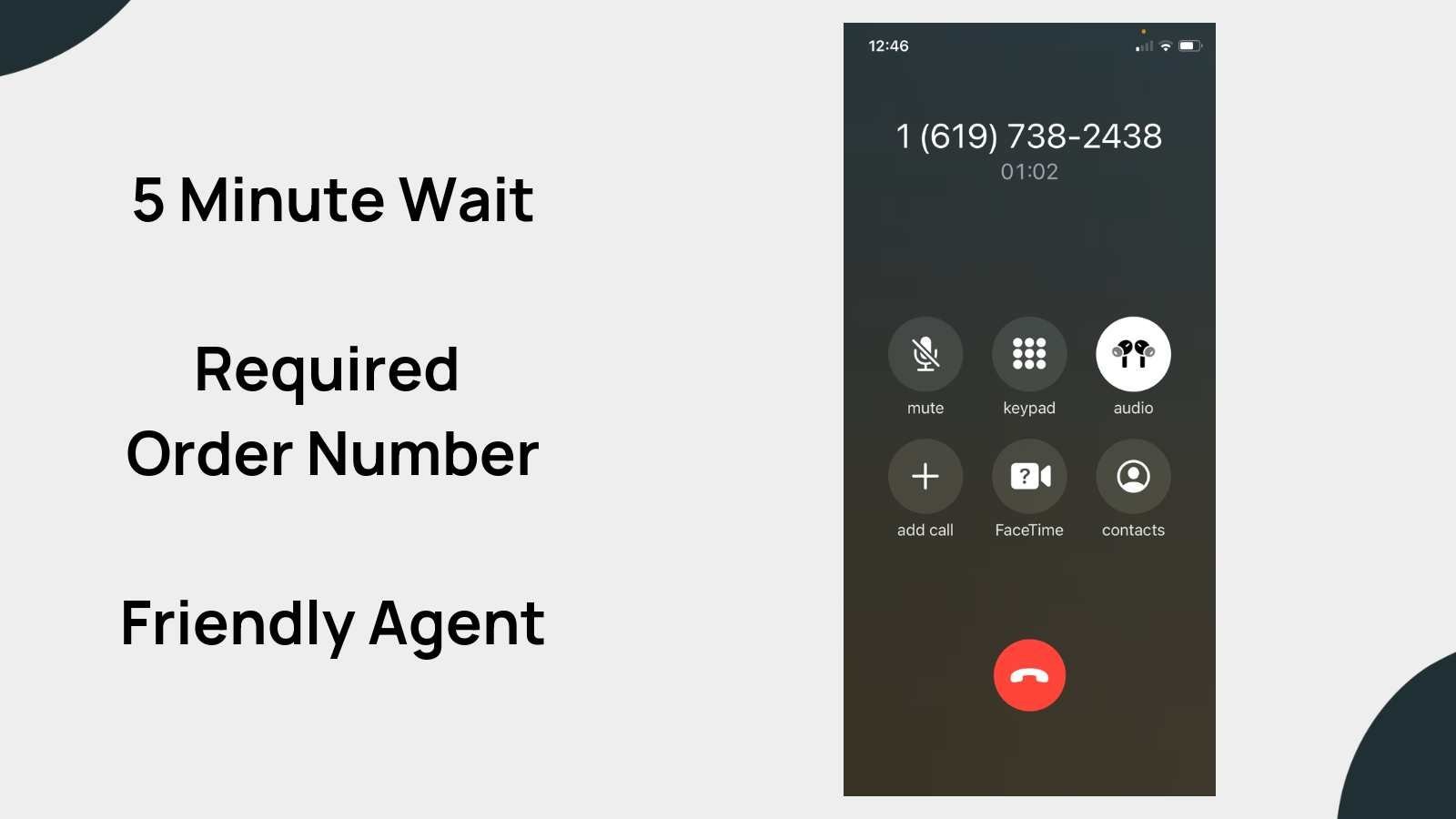
A quick Google search reveals a significant number of unhappy Nano customers. Some complain about customer service.
Midway through my setup, I called the customer service number to troubleshoot the squealing in-the-ear hearing aids. My wait time was a little over 5 minutes (a little annoying), but when I got someone on the line, they were helpful and knowledgeable.
The customer service agent did need my order number to locate me (vs. my phone number or name). Once I found that number, he walked me through options like changing the ear-tips and batteries.
There wasn't much he could do about the squeal as that appeared to be a hardware limitation.
Nano Hearing Aid Return Policy - 45 Days
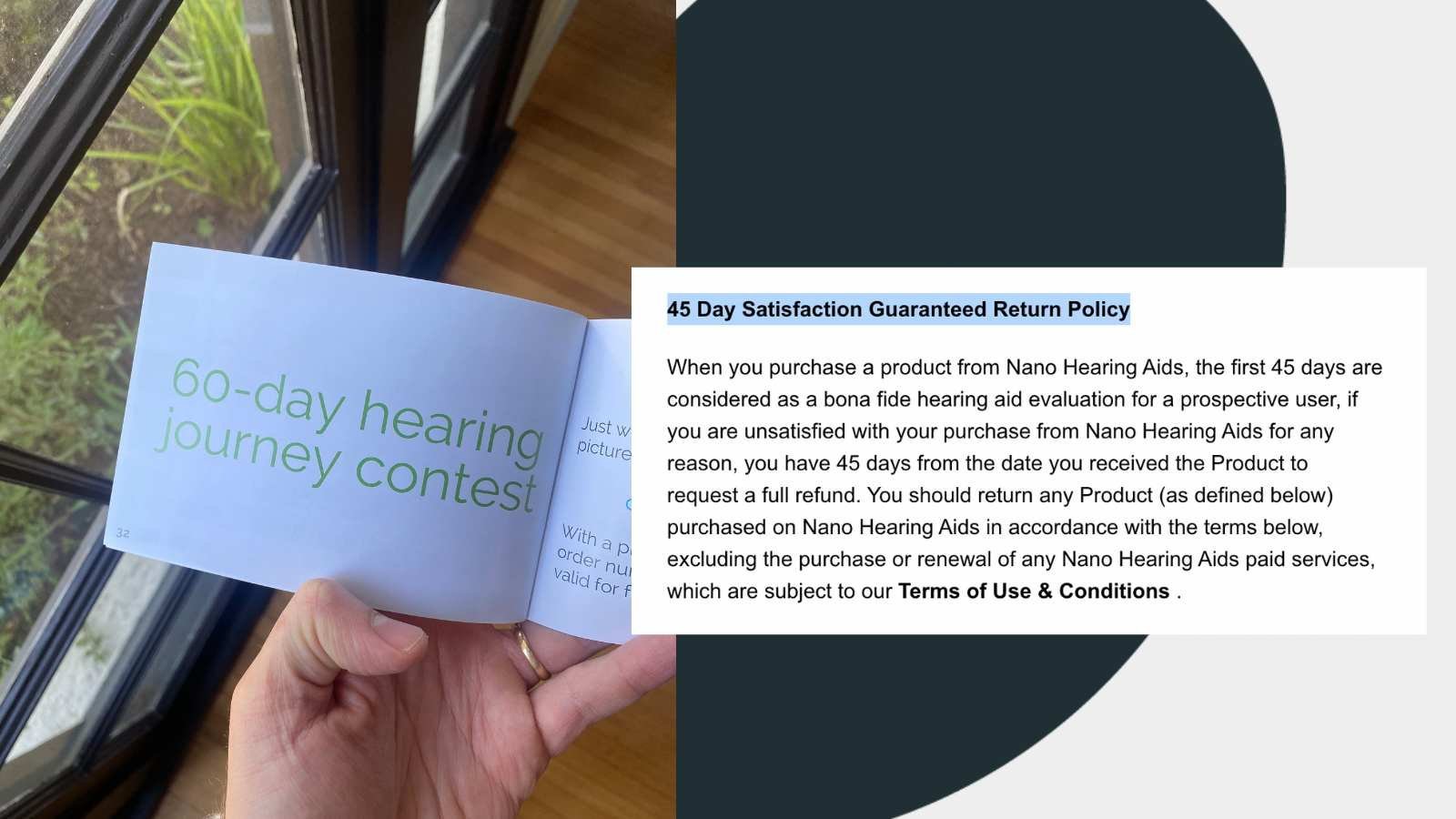
I haven’t tried to return my Nano devices so I can’t directly speak to the return process. The process does include several steps so you’ll need to set aside some time to get it right.
One thing did stand out to me during my review. Nano talks a lot about their 60-day hearing journey contest.
The Nano onboarding materials stressed that hearing aids take time to become comfortable and helpful because require the brain to learn how to take in new sounds. Nano is correct here. When I wore hearing aids for the first time the world felt very loud and out of balance. Over weeks and months my brain adjusted.
Nano suggests that users wear their hearing aids for 60 days and send a photo of their hearing aids in use for a $200 coupon. I took note of this timeframe because Nano’s return policy is 45 days.
If you decide to try Nano I’d recommend setting a reminder for 30-days and making a decision about how well the product is working for you.
60 days is too late for a return.
Final Thoughts
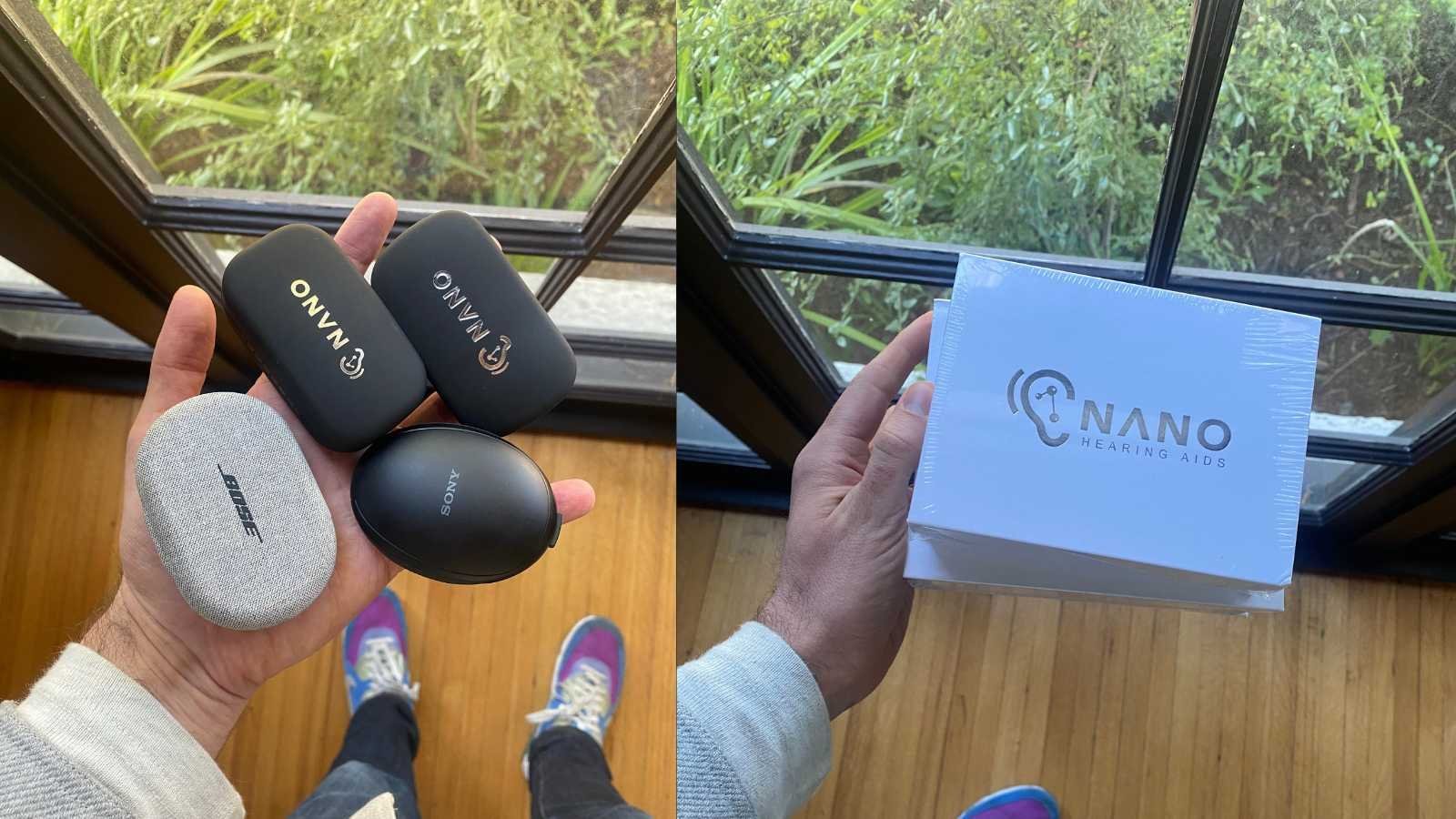
Nano's marketing claims are often aggressive and (according to the state of Vermont) unethical. This review isn't about marketing, though.
After a full review, I'm not sure I'd call Nano hearing aids a scam. Their behind-the-ear style device offers some customization, and I could hear the TV more clearly.
That said if you were my aunt, I'd steer you toward other options like Jabra Enhance Select or Bose.
If you've tried Nano hearing aids or have questions about my experience, I'd love to hear from you drop me a note at [email protected]



